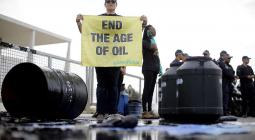Pandemic worsens outlook for U.S. coal.

Add U.S. coal to the list of industries threatened by the novel coronavirus.
Part of its problem is conditions that precede the pandemic. U.S. coal plants are an aging bunch. Weak electricity demand has only intensified competition with gas and renewables.
The weather has been a drag on American miners, too; a warm winter helped push coal generation in the first quarter down by roughly a third, year over year, according to S&P Global Platts.
But the onset of the coronavirus has the makings of a slow-rolling crisis for the coal industry, analysts say.
A lockdown on economic activity in most of the United States is eroding electricity demand (Energywire, April 6). And coal generation is mirroring the decline.
American coal generation declined 36% in March compared with the same month last year, according to an E&E News review of federal figures — even as generation from natural gas and wind increased over that time period. The U.S. Energy Information Administration (EIA) said yesterday it expects coal generation to decline 20% in 2020.
The result has been a steady buildup in utility coal stockpiles. By early summer, analysts say, power companies could run out of space to store additional coal shipments.
Coal generation in March was already below 2019 levels before many states took steps to shut down their economies. It has fallen further as lockdowns expanded nationwide, especially after states with coal-reliant electric systems instituted shutdowns.
The dangers for coal are several. Large stockpiles weigh down prices and increase pressure on miners to cut back production. EIA is projecting coal production will fall 153 million tons, or 22%, to 537 million tons in 2020.
[Benjamin Storrow]
9 April 2020
IEEFA








